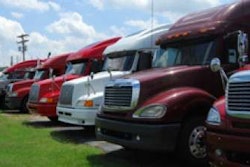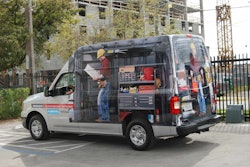

Navistar International announced that it is involved in an agreement with Eco Motors International supporting the development of the latter company’s OPOC—opposed piston, opposed cylinder—engine. The engine is constructed of perfectly balanced, two cylinder, opposed piston units that can be linked together with an electric clutch. When two or more units are incorporated into a vehicle, the clutch can disconnect one of them and allow it to shut off under cruise conditions. This can yield a fuel economy improvement of up to 45 percent as compared with engines of today.
Don Runkle, CEO, EcoMotors International, said, “For customers such as Navistar, this remarkable engine technology represents a competitive advantage that enables not only enhanced environmental sustainability, but also greater profitability. Our engineers are working to effectively rejuvenate the internal combustion engine for the 21st century.”
According to Navistar, “EcoMotors International’s first product targeted for commercial application is a turbo-diesel version of the innovative opposed-piston, opposed-cylinder engine.”
The engine employs an unusual layout consisting of two opposed cylinders located across from one another, each consisting of two pistons that oppose one other and operate in opposite directions. All four pistons operate off separate connecting rods linked to a common crankshaft.
The opposed pistons move toward one another during compression, and back apart during each power stroke. The engine resembles traditional two-stroke designs because there is a power stroke for each crankshaft revolution for each cylinder.
The engine eliminates the cylinder head and all the valve gear as both the exhaust and intake ports are located in the cylinder wall and open and close as the pistons move to uncover them. Its simpler design should yield substantially reduce cost. Navistar officials said it would use familiar drivetrain components, but would turn faster. This suggests the possible use of lighter and smaller drive components.
Since the pistons operate in opposite directions and each operating cylinder has two of them, the speed at which they move is half of that typical in standard engines, and this allows higher rpm operation than what is typical of today’s diesels.
It is the opposed operation that yields the perfect balance, virtually eliminating vibration. This is what allows two or more two-cylinder assemblies to be clutched together electrically when maximum power is required, and de-clutched when the vehicle cruises. Since each engine is perfectly balanced, the clutch can lock the two together in any relationship—the cylinders need not be timed properly as is necessary in a normal engine. The engine uses an electrically driven turbocharger to allow instant boost delivery during acceleration and provide more precise control of boost pressure under all conditions. This virtually eliminates turbo lag and also improves low-speed torque by 10% or more.
Vinod Khosla, primary investor along with Bill Gates, explained the engine’s combustion and emissions characteristics resemble four-stroke engines more closely than those of two-strokes because of better breathing. Khosla said it can deliver 2-3 times the power density of a standard diesel engine, and produce up to one hp per lb. International’s Eric Tech president of the Navistar Engine Group, said, “In the finished vehicle, this will yield both better aerodynamics and better packaging efficiency.”
International and Eco Motors officials did not comment on when the engine would see production, but it was clear they believe it will find its way both into the heavy truck market and the passenger car and light duty truck market, which they estimated at $330 billion in size annually. No mention was made of exclusive marketing rights granted to Navistar so, presumably, other truck makers will also be given the opportunity to incorporate the engine into their vehicles.










